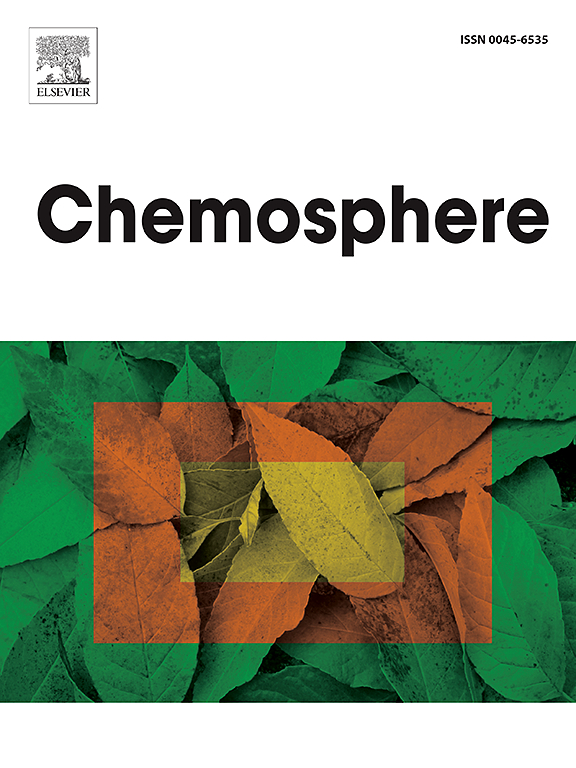可作为道路基料的磷石膏和城市生活垃圾焚烧底灰混合物的化学性能
IF 8.1
2区 环境科学与生态学
Q1 ENVIRONMENTAL SCIENCES
引用次数: 0
摘要
酸性磷石膏(PG)和碱性城市生活垃圾焚烧(MSWI)底灰(BA)等废弃物在道路基层等建筑领域的再利用日益受到全球的欢迎。虽然每种材料都是独立研究的,但它们的组合代表了一种资源回收和废物从填埋或储存转移的新方法。本研究评估了三种BA源与PG混合,重点关注痕量金属和氟化物的总浓度和可浸出浓度。与美国联邦监管的直接暴露风险阈值相比,所有样品中砷含量均有所升高(4.71-18.6 mg/kg), MSWI BA样品中铅含量升高(571-790 mg/kg)。与PG混合可降低几种混合设计中的总铅浓度(91 ~ 673 mg/kg)。每种材料的浸出分析显示,BA或PG样品中As, Cd, Sb, Cu, Pb和氟化物浓度是潜在关注的成分。PG (pH为2.31)与BA (pH为9-11)混合可获得更中性的洗脱液,pH范围为5.5-10.6,随着PG添加量的增加而降低。在混合物中观察到砷、镉、锑和氟化物的浓度显著降低,这主要归因于最终洗脱液中的pH值改变或沉淀或吸附机制。对于评估的每种成分,至少有一种BA-PG混合物将浓度降低到低于监管筛选限制。新鲜的MSWI BA在降低流动Sb和氟化物浓度方面最有效,这是由于在较高的ph值下,新鲜灰中发现的钙矾石和波特兰石含量升高。这些研究结果表明,通过适当的混合设计和考虑现场条件,BA- pg混合物可能提供一种减少环境影响的实用再利用途径。未来的调查涉及土壤和地下水中特定地点的稀释和衰减,可以用于评估混合方法的完整风险评估。本文章由计算机程序翻译,如有差异,请以英文原文为准。

Chemical performance of phosphogypsum and municipal solid waste incineration bottom ash blends for potential use as road base
The reuse of waste products such as acidic phosphogypsum (PG) and alkaline municipal solid waste incineration (MSWI) bottom ash (BA) in construction applications like road base continues to gain global popularity. While each material has been studied independently, their combination represents a novel approach to resource recovery and waste diversion from landfilling or stockpiling. This study evaluated three BA sources blended with PG, focusing on total and leachable concentrations of trace metals and fluoride. Compared to United States federal regulatory risk thresholds for direct exposure, elevated levels of As were found in all samples (4.71–18.6 mg/kg), and Pb in MSWI BA samples (571–790 mg/kg). Blending with PG reduced the total Pb concentrations in several mix designs (91–673 mg/kg). Leaching analysis of each material revealed As, Cd, Sb, Cu, Pb, and fluoride concentrations as constituents of potential concern from either BA or PG samples. Blending PG (pH 2.31) and BA (pH 9–11) resulted in more neutral eluent that ranged from pH of 5.5–10.6, decreasing with increasing PG replacement. A notable reduction in the concentrations of As, Cd, Sb, and fluoride was observed with the blends, attributed largely to the pH modification in the final eluent or precipitation or sorption mechanisms. For each constituent evaluated, at least one BA-PG blend reduced concentrations below the regulatory screening limit. Fresh MSWI BA was most effective at reducing mobile Sb and fluoride concentrations, attributed to the elevated ettringite and portlandite found in fresh ash at an elevated pH. These findings suggest that with appropriate mix design and consideration of site conditions, BA-PG blends may offer a practical reuse pathway with reduced environmental impact. Future investigations involving site-specific dilution and attenuation in soil and groundwater can serve to evaluate the complete risk assessment of the blending approach.
求助全文
通过发布文献求助,成功后即可免费获取论文全文。
去求助
来源期刊

Chemosphere
环境科学-环境科学
CiteScore
15.80
自引率
8.00%
发文量
4975
审稿时长
3.4 months
期刊介绍:
Chemosphere, being an international multidisciplinary journal, is dedicated to publishing original communications and review articles on chemicals in the environment. The scope covers a wide range of topics, including the identification, quantification, behavior, fate, toxicology, treatment, and remediation of chemicals in the bio-, hydro-, litho-, and atmosphere, ensuring the broad dissemination of research in this field.
 求助内容:
求助内容: 应助结果提醒方式:
应助结果提醒方式:


